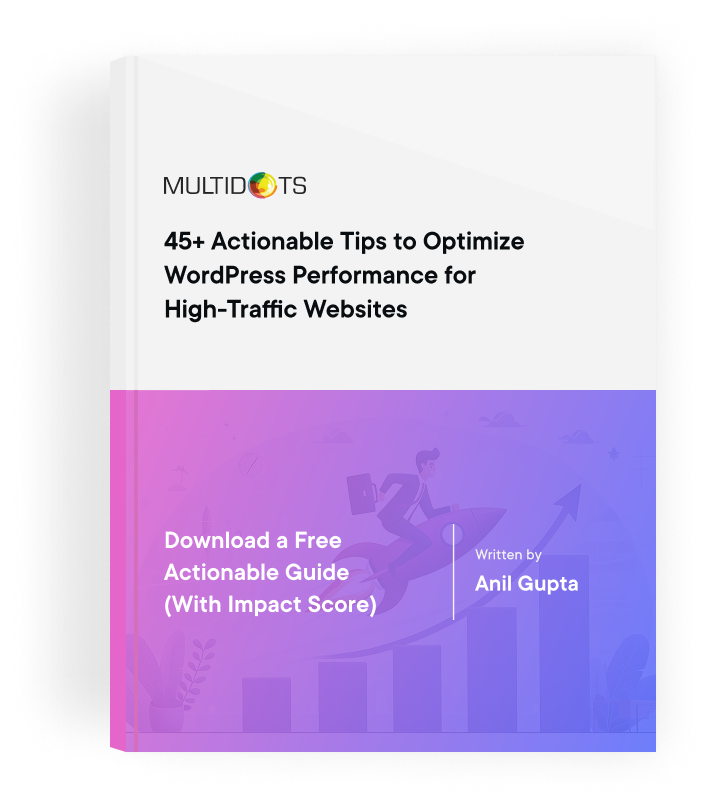Strapi vs Sanity for Enterprise Content Management
Comparing Strapi vs Sanity for enterprise content management while exploring scalability, costs, APIs, and alternatives.

Table of Contents
Strapi vs Sanity – two major contenders in the headless CMS world. Both are powerful platforms for managing complex content at scale, but the way they go about it? That’s a whole different story.
From how their APIs are designed to how content is managed and delivered, the differences are real. And with all the factors to consider (security, scalability, team structure, long-term maintenance, and integration needs) choosing between them can feel like a huge decision. What if you pick the wrong one? It could cost you millions (or at least a whole lot of headaches).
If neither of these platforms checks all the boxes, don't forget: WordPress is always there as a reliable enterprise alternative, offering unmatched flexibility and an ecosystem that's tough to beat. But we’ll get to that a bit later…
In this guide, we’ll juxtapose these two popular enterprise CMS platforms so you can make a more informed decision about the right CMS for your business.

What is Strapi?
Strapi is an open-source, headless CMS designed for developers who want full control over their content management and API creation. Built with JavaScript and Node.js, it supports RESTful and GraphQL APIs, making it highly adaptable to various front-end frameworks.
One main feature of Strapi is its self-hosted model, which allows enterprises to manage their infrastructure and security policies without vendor lock-in. Its Content-Type Builder provides a no-code UI for defining data structures, while custom fields and plugins extend its functionality. With a strong developer community and flexible deployment options, Strapi is usually used by businesses needing a customizable, API-first content platform.
A company that uses Strapi is Walmart, which uses the platform to manage its vast content and deliver consistent, personalized experiences across its digital platforms.

What is Sanity?
Sanity is a cloud-based, headless CMS designed for structured content and real-time collaboration. Unlike database-driven platforms, it uses a content lake architecture, allowing teams to store and query content dynamically across multiple platforms.
Sanity’s Studio interface, built with React, enables customization and a smooth content-editing experience. Features like real-time collaboration, version control, and GROQ-based querying make it ideal for teams handling complex, distributed content. With serverless infrastructure and extensive integration options, Sanity is well-suited for enterprises that prioritize scalability, omnichannel content delivery, and developer flexibility.
A company that uses Sanity is Figma, which uses the platform to manage its design content and smooth collaboration across its globally distributed teams.
Strapi vs Sanity
Strapi and Sanity are both headless CMSs, but they have different approaches. Strapi lets you self-host, giving your business full control, whereas Sanity's managed Content Lake makes scaling easier, but you're locked into their infrastructure.
Both platforms offer SSO, RBAC, and audit logs, but Sanity automates security updates, whereas Strapi requires teams to manage compliance and infrastructure internally. While Sanity is more established in enterprise adoption, neither dominates the market.
User Experience and Technical Capabilities
Strapi’s Content-Type Builder is a user-friendly way to define content models, whereas Sanity Studio is highly customizable but requires developer setup. Strapi’s Node.js architecture supports multiple databases, offering flexibility, while Sanity’s document-based model suits structured content.
Strapi benefits from an extensive plugin marketplace, whereas Sanity relies on custom-built integrations. Strapi includes built-in caching, while Sanity’s cloud-based infrastructure ensures automatic scaling. Both platforms support media management, but Sanity’s real-time processing gives it an edge for large-scale assets.
Content Management Workflows and Team Collaboration
Sanity is great for real-time collaboration, making it a strong choice for editorial teams. Strapi follows a structured workflow with approval processes. Both platforms offer version control, role-based access, and localization, though Sanity simplifies multi-language content management with its cloud-based approach.
Strapi’s plugin marketplace provides pre-built integrations, while Sanity relies more on API-driven connections. Choosing between them depends on whether enterprises prioritize backend control, customization, or scalability.
Scaling and Performance for Enterprises: Strapi vs Sanity
Strapi and Sanity take different approaches to scalability and performance, each catering to distinct enterprise needs. Strapi supports horizontal scaling, allowing organizations to distribute workloads across multiple servers. This is beneficial for businesses managing high-traffic applications that require database clustering and load balancing. However, scaling a self-hosted system like Strapi requires manual setup and infrastructure management.
Sanity, on the other hand, operates on a serverless architecture, handling scaling automatically through multi-cloud infrastructure. Enterprises using Sanity don’t need to manage backend performance, as resources scale dynamically based on API demand. This reduces maintenance but ties users to Sanity’s cloud ecosystem.
Performance optimization is also a bit different. Strapi relies on built-in caching and database optimizations, giving teams control over query performance and response times. Sanity uses automatic scaling and offloading performance management to its cloud-based infrastructure. While this does give you fast content delivery, high API usage may lead to increased costs.
Both platforms offer enterprise-grade features like Single Sign-On (SSO), Role-Based Access Control (RBAC), and audit logs. However, since Strapi is self-hosted, security and compliance must be managed internally, whereas Sanity automates security updates and ensures high availability through its cloud service.
Strapi is best suited for enterprises requiring full infrastructure control and custom performance tuning, while Sanity is ideal for organizations that prefer hassle-free scaling with managed infrastructure.
Integration Options and Extensibility Comparison
Strapi offers a custom plugin development ecosystem, allowing businesses to build and extend functionality based on unique requirements. Sanity lacks an extensive plugin marketplace but enables deep customization within its Content Studio.
API flexibility is another difference. Strapi supports REST and GraphQL, making it adaptable to a wide range of integrations. Sanity uses structured content APIs, optimized for GROQ-based querying and omnichannel content delivery.
Third-party integration support varies. Strapi provides webhooks and database integrations, making it compatible with various enterprise applications. Sanity, built for structured content, integrates with eCommerce, media platforms, and cloud storage services.
Both platforms support localization and translation workflows, but Sanity’s real-time content model makes it a stronger choice for businesses managing global, multi-language content.
Enterprises prioritizing plugin extensibility and backend control will benefit from Strapi, while those needing pre-structured content delivery and cloud-driven integrations may find Sanity more efficient.
Cost Analysis and ROI Considerations
Pricing structures differ between the platforms – Strapi charges per seat, making costs predictable, while Sanity’s usage-based pricing fluctuates based on API calls and storage. Strapi supports REST and GraphQL, offering widespread compatibility, while Sanity’s GROQ query language is optimized for structured content but requires developers to learn a new syntax.
Strapi offers a free open-source plan with unlimited usage, though it requires self-hosting, which involves additional infrastructure costs. The Growth plan costs $15 per seat/month and adds content history and basic support. The Enterprise plan includes SSO, audit logs, and premium support, with pricing based on usage. As a self-hosted solution, Strapi incurs infrastructure costs, including servers, security, and maintenance, which fall on the organization.
Sanity’s free plan supports small projects, while the Growth plan costs $15 per seat/month and includes features like content releases and AI Assist. The Enterprise plan offers custom pricing with SSO, dedicated support, and enhanced security. As a fully managed cloud service, Sanity removes infrastructure burdens but scales pricing based on API usage, storage, and data requests.
Strapi may require dedicated development resources for hosting, maintenance, and scaling, leading to long-term infrastructure costs. Sanity reduces internal workload but introduces variable pricing tied to usage.
Both platforms may have hidden costs for plugins, integrations, and onboarding. Strapi suits teams preferring control and predictable infrastructure costs, while Sanity’s managed model simplifies scaling but may lead to higher recurring expenses.
WordPress as an Enterprise-Ready CMS
Strapi vs Sanity vs WordPress
WordPress powers over 43% of all websites, making it the most widely adopted CMS, and it has a reputation you just can’t argue with – far surpassing headless and proprietary enterprise platforms. Its dominance stems from flexibility, scalability, and an extensive ecosystem that enterprise organizations can use for content management, eCommerce, and publishing at scale.
Unlike proprietary CMS solutions – such as Strapi and Sanity – WordPress offers over 60,000 plugins, which gives you endless customization and integrations. Whether managing complex workflows, personalizing user experiences, or scaling to handle millions of visitors, WordPress provides enterprise-grade solutions without vendor lock-in.
We also can’t forget TCO. Many headless CMS platforms require custom development, expensive licensing, and unpredictable API costs, whereas WordPress offers a lower TCO with self-hosted or managed WordPress options that fit different budgets.
For content teams, WordPress will always be more intuitive than many enterprise platforms, reducing training and onboarding time. Teams can quickly update content without relying on developers, whereas headless CMS solutions often require engineering support for content modeling and structuring.
Scalability is another strength. WordPress supports multi-site networks, multi-language deployments, and high-traffic architectures, making it a top choice for global brands. Its open-source community and enterprise hosting partners ensure continuous innovation and long-term support, further strengthening its position as the most adaptable enterprise CMS.
Talk to Multdots Experts About Your Project Needs
Choosing the right enterprise CMS is complicated, especially when comparing headless options like Strapi and Sanity with traditional platforms. While headless CMSs offer flexibility, they often come with higher development costs and management overhead.
Multidots is a WordPress VIP Gold Partner, and we specialize in enterprise solutions, helping high-traffic publishers, global brands, and media companies streamline their content operations. Our team has successfully migrated and optimized hundreds of enterprise websites, ensuring scalability, security, and smooth content workflows.
If you’re unsure which CMS best suits your needs, our experts can help you assess your requirements and map the best solution. Talk to the Multidots team today, and let’s see what great work we can do together.
Feel free to schedule a quick call with our migration expert.
Contact Us
